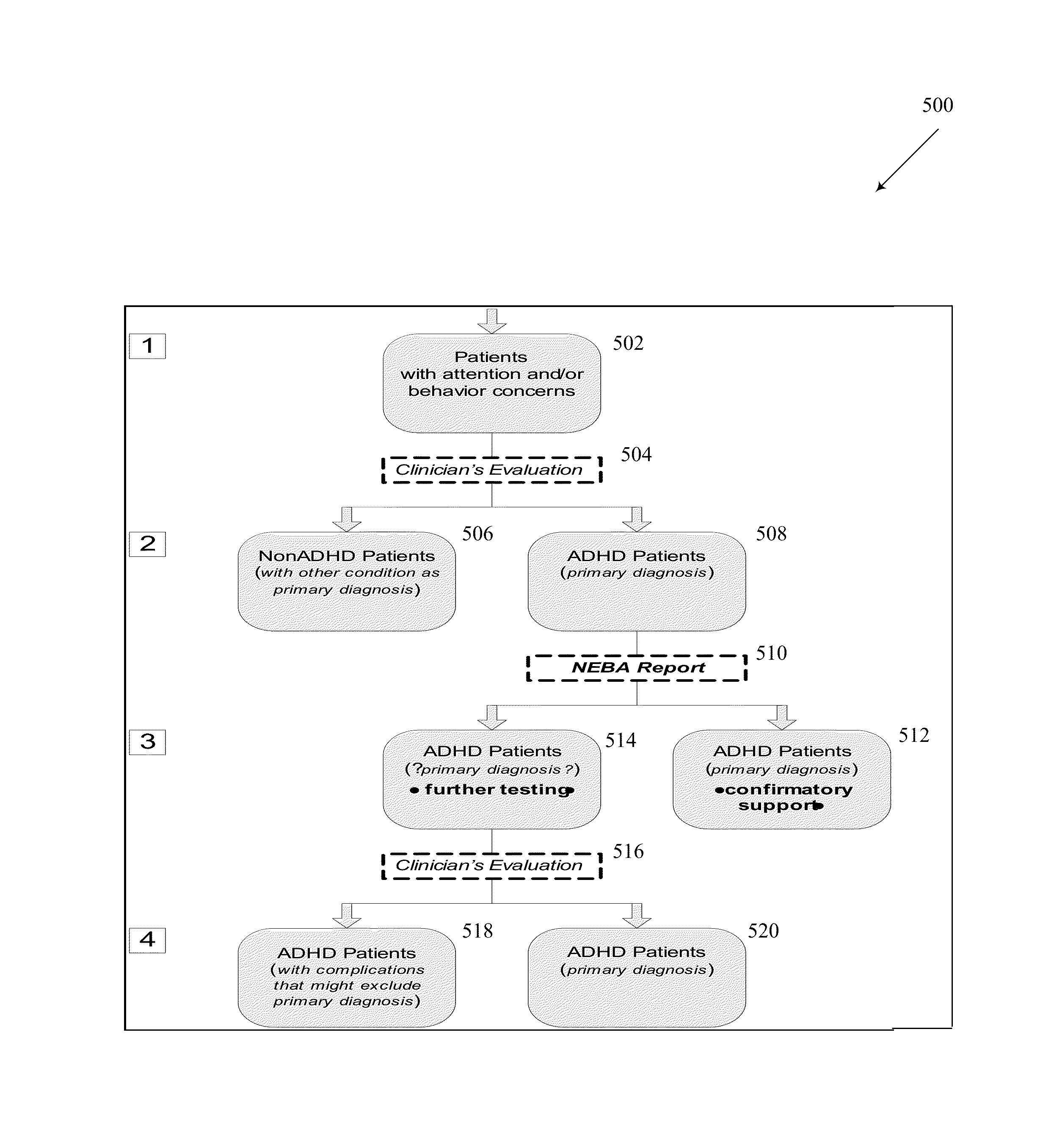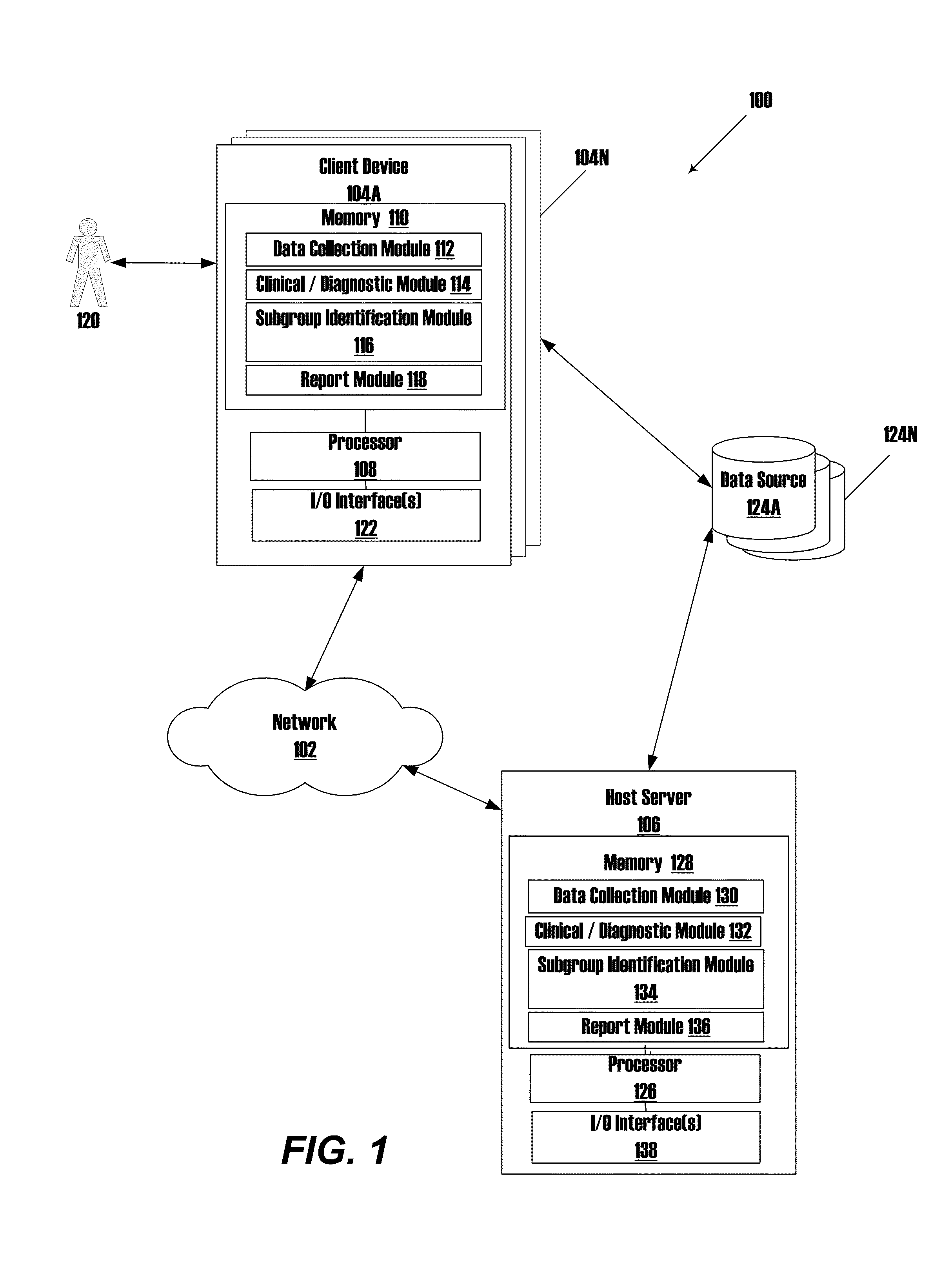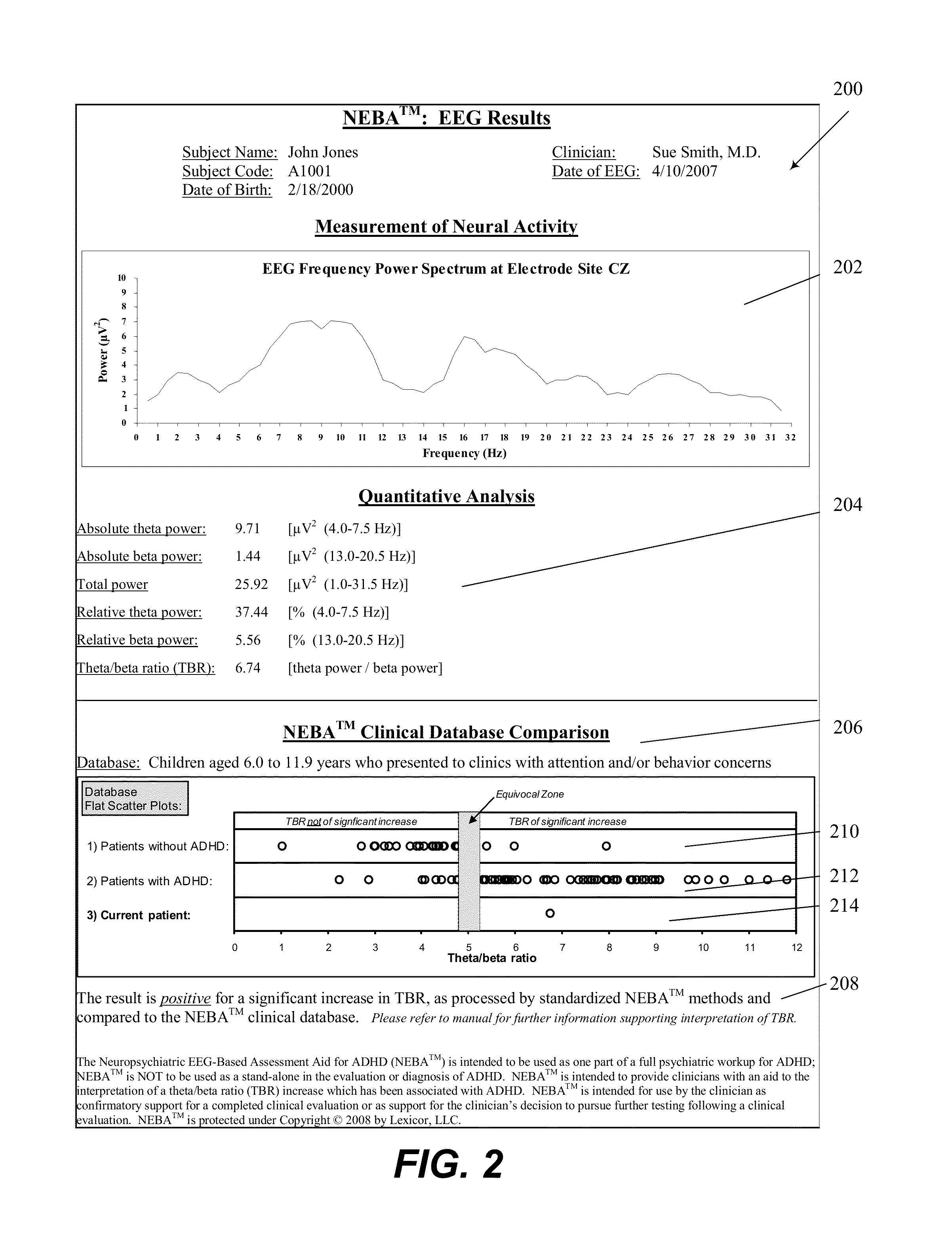Systems and methods to identify a subgroup of ADHD at higher risk for complicating conditions
a technology of adhd and subgroup, applied in the field of biological disorders, can solve the problems of limited clinical diagnosis of adhd in a patient, inability to distinguish between adhd patients, and inability to achieve the differentiation of adhd patients, so as to facilitate the improvement of clinical valu
- Summary
- Abstract
- Description
- Claims
- Application Information
AI Technical Summary
Benefits of technology
Problems solved by technology
Method used
Image
Examples
Embodiment Construction
[0024]Illustrative embodiments of the invention now will be described more fully hereinafter with reference to the accompanying drawings, in which example embodiments of the invention are shown. Indeed, the invention may be embodied in many different forms and should not be construed as limited to the embodiments set forth herein; rather, these embodiments are provided so that this disclosure will satisfy applicable legal requirements. Like numbers refer to like elements throughout.
[0025]Certain embodiments of the invention can use systems and methods to identify a subgroup of ADHD at higher risk for complicating conditions that, for example, would be of concern to an ADHD evaluation, may account for attention and behavior symptoms, and may lead a clinician to exclusion of ADHD from primary diagnosis. Certain embodiments of the invention can use EEG analysis and interpretation to separate a previously diagnosed ADHD group into, for instance, at least two clinically meaningful subgro...
PUM
 Login to View More
Login to View More Abstract
Description
Claims
Application Information
 Login to View More
Login to View More - R&D
- Intellectual Property
- Life Sciences
- Materials
- Tech Scout
- Unparalleled Data Quality
- Higher Quality Content
- 60% Fewer Hallucinations
Browse by: Latest US Patents, China's latest patents, Technical Efficacy Thesaurus, Application Domain, Technology Topic, Popular Technical Reports.
© 2025 PatSnap. All rights reserved.Legal|Privacy policy|Modern Slavery Act Transparency Statement|Sitemap|About US| Contact US: help@patsnap.com



